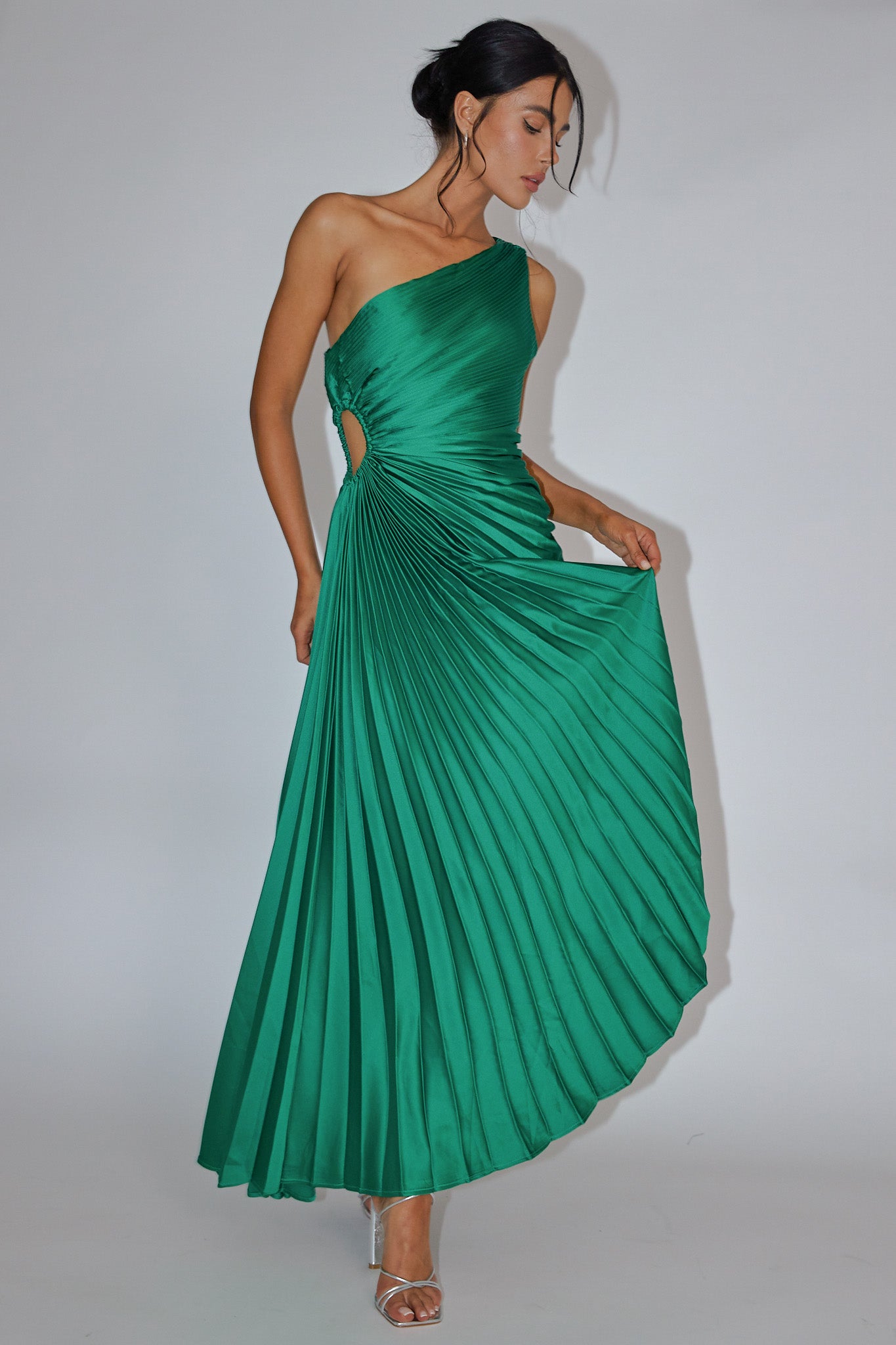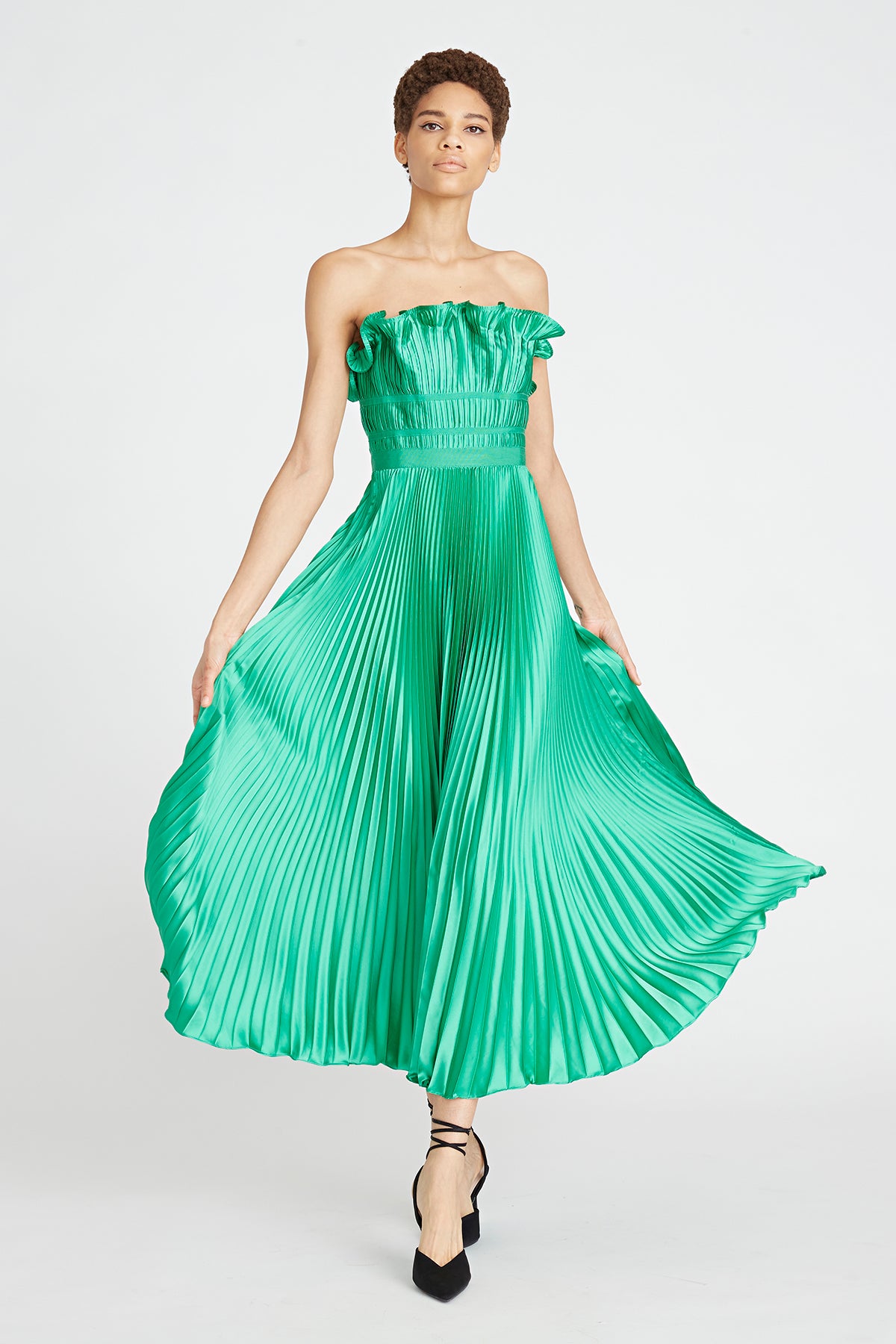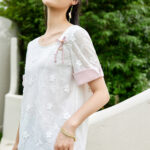5 Ways to Style Pleated Dresses for Effortless Elegance
Effortless elegance isn’t about following fleeting trends; it’s about mastering timeless pieces that adapt to your life. Among these, the pleated dresses stand out as a versatile cornerstone, offering a blend of structure and fluidity that few garments can match. This article delves into five distinct styling methods, each designed to unlock the inherent sophistication of pleated attire. We’ll explore how to transition these dresses from casual outings to formal events, ensuring you radiate confidence without appearing overdone. The goal is to provide you with practical, scientifically-backed insights into fabric behavior, color psychology, and design principles, empowering you to make informed style choices that resonate with your personal narrative.
1. The Monochromatic Mastery
Adopting a monochromatic approach with pleated dresses creates a seamless visual flow that elongates the silhouette and exudes a refined, minimalist charm. This technique relies on the scientific principle of color continuity, where the human eye perceives uninterrupted hues as more harmonious and less disjointed. According to color theory, as explained on Wikipedia, monochromatic schemes use variations in lightness and saturation of a single color, which can evoke feelings of calm and sophistication. When applied to pleated designs, the uniform color amplifies the texture and movement of the folds, making the dress a statement piece without overwhelming complexity. For instance, a deep green pleated maxi dress paired with matching accessories draws attention to the intricate pleating, while the consistent tone ensures elegance. Fashion icons like Audrey Hepburn often embraced monochromatic outfits, as seen in her timeless films, where simplicity spoke volumes. From a practical standpoint, this style minimizes decision fatigue—you can effortlessly assemble an outfit by sticking to one color family, saving time while maintaining a polished look. Additionally, consider the fabric’s drape; materials like chiffon in pleated forms enhance the monochromatic effect by allowing light to play off the folds, creating depth. To incorporate this, start with a base color that complements your skin tone—earth tones for warm undertones or jewel tones for cooler ones—and build from there. This method not only highlights the dress’s design but also aligns with psychological studies suggesting that cohesive color palettes can boost perceived competence and reliability.

2. Layering for Dimension and Versatility
Layering transforms a simple pleated dresses into a dynamic ensemble suitable for varying climates and occasions. This approach leverages the interplay of textures and proportions, a concept rooted in design principles from authoritative sources like the Fashion Institute of Technology. By adding elements such as a tailored blazer or a lightweight cardigan, you introduce structural contrast that balances the softness of the pleats. For example, a pleated midi dress in teal can be paired with a neutral-toned blazer to create a sharp, professional look for work, while the pleats add a touch of femininity. Scientifically, layering affects thermal regulation; as noted in textile studies, multiple thin layers trap air more effectively than a single thick garment, providing adaptability in changing environments. This isn’t just about warmth—it’s about style intelligence. Quora discussions often highlight how layering can conceal or accentuate body features, making it a strategic tool for personal expression. Imagine slipping into a pleated chiffon dress for an evening event and draping a sleek leather jacket over it; the juxtaposition of delicate folds against edgy outerwear embodies effortless elegance. Moreover, layering allows for color blocking, where complementary shades can highlight the pleats’ rhythm. When executing this, focus on fabric weights—avoid bulky items that might crush the pleats, opting instead for lightweight layers that preserve the dress’s movement. As Coco Chanel once implied, elegance is refusal, and in layering, it’s about choosing pieces that enhance rather than overwhelm. This method not only extends the wearability of your pleated dress across seasons but also encourages creativity, turning a single garment into multiple outfits.

3. Accessorizing with Purpose
Accessories are the punctuation marks of fashion, and when paired with pleated dresses, they can define the entire outfit’s tone. This strategy involves selecting items that complement the dress’s texture and lines, rather than competing with them. From a psychological perspective, accessories serve as focal points that guide the viewer’s eye, a concept supported by Gestalt principles in visual perception. For instance, a statement belt worn at the waist of a flowing pleated dress can emphasize an hourglass figure, while delicate jewelry maintains the elegance without distraction. Historical references, such as the styles favored by Grace Kelly, show how pearls and structured handbags can elevate a simple pleated design to royal standards. On platforms like YouTube, fashion experts often demonstrate how the right accessories—like a wide-brimmed hat or minimalist clutch—can transform a casual pleated dress into event-ready attire. The key is balance; too many accessories can clutter the pleats’ intricate patterns, while too few might leave the outfit feeling incomplete. Consider the dress’s color and pleat size; smaller, finer pleats pair well with subtle, refined accessories, whereas bolder pleats can handle more dramatic pieces. Additionally, functional elements like a crossbody bag add practicality, aligning with the modern demand for style that adapts to daily life. This approach not only enhances the visual appeal but also incorporates ergonomic design, ensuring comfort alongside aesthetics. By accessorizing with intention, you harness the dress’s inherent elegance, making it a canvas for personal expression that feels both intentional and effortless.
4. Playing with Proportions and Silhouettes
Manipulating proportions with pleated dresses allows for a customized fit that flatters various body types, embodying the art of tailoring in everyday wear. This method draws from architectural principles, where balance and scale create visual harmony. For example, a pleated dress with a voluminous skirt can be balanced with a fitted top to avoid overwhelming the frame, a technique often highlighted in design courses at institutions like Parsons School of Design. The pleats themselves add rhythm and movement, which can be accentuated or subdued based on the silhouette you choose. In literature, characters like Daisy Buchanan from “The Great Gatsby” epitomize the elegance of structured yet fluid dresses, reflecting the 1920s fascination with dynamic forms. When styling, consider the dress’s length; a shorter pleated dress paired with sleek boots creates a playful, modern look, while a floor-length version exudes grandeur. This isn’t just about aesthetics—it’s about functionality. As noted in ergonomic studies, clothing that aligns with natural body movements enhances comfort and confidence. To apply this, experiment with layering different hemlines or incorporating elements like capes or asymmetrical cuts that play off the pleats’ symmetry. The result is an outfit that feels both intentional and spontaneous, capturing the essence of effortless elegance. Moreover, this approach encourages body positivity by highlighting how strategic cuts can celebrate individual shapes, making pleated dresses a versatile tool in any wardrobe.

5. Embracing Seasonal Adaptability
Adapting pleated dresses to different seasons ensures year-round versatility, blending practicality with style. This approach is grounded in textile science, where fabric choices impact thermal comfort and durability. For instance, a lightweight chiffon pleated dress is ideal for summer, allowing breathability and ease of movement, while a wool-blend pleated design provides warmth in winter without sacrificing elegance. According to resources like Baidu Baike, natural fibers like cotton or silk in pleated forms regulate body temperature better than synthetics, making them a smart choice for seasonal transitions. Styling-wise, layering with seasonal accessories—such as a scarf in autumn or bare sandals in spring—can refresh the same dress for new contexts. This method also aligns with sustainable fashion principles, as investing in a versatile pleated dress reduces the need for excessive wardrobe turnover. In popular culture, figures like Meghan Markle have demonstrated how to transition a pleated dress from day to night across seasons, often by adjusting outerwear and footwear. To implement this, focus on color palettes that resonate with the season—earthy tones for fall, pastels for spring—while letting the pleats add texture and interest. This not only maximizes your clothing investment but also fosters a mindful approach to fashion, where elegance stems from adaptability and intentionality.

Mastering these five styling techniques empowers you to harness the full potential of pleated dresses, transforming them from mere garments into expressions of personal elegance. Each method—whether through color harmony, layered textures, purposeful accessories, proportional play, or seasonal adaptation—builds on objective insights to create looks that feel both innate and refined. Embrace these approaches to cultivate a wardrobe where every pleated dress tells a story of sophistication and ease.







